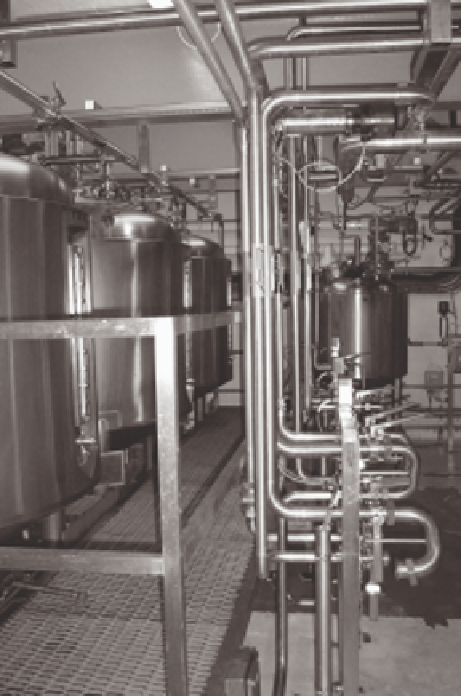Agriculture Reference
In-Depth Information
Fig. 16.16
Yeast propagation system at Jennings Brewery, Cockermouth, UK.
(see Section 16.3.1). Additionally, many drinks are rendered microbiologically dead
by a pasteurisation step prior to or after packaging.
Brewers always have adequate stocks of viable yeast throughout the year,
cropped from previous brews. If the yeast ceases to function properly or if it
becomes contaminated, then brewers can acquire fresh yeast from another similar
brewery or propagate their own (Fig. 16.16) from pure cultures (often of their own
yeast) obtained from state depositories, private non-profi t depositories or specialist
companies (Table 16.23). Similarly, rice winemakers need an all-year-round
supply of nuruk (Korean makkoli), koji (Japanese sake) or similar to provide the
right balance of microorganisms for saccharifi cation/fermentation (McKay
et al.
2011b). Makers of cider, perry and wine, on the other hand, tend to use fresh
cultures for each new brew.
Additionally, many winemakers and a few cidermakers add pure cultures of
malolactic bacteria (especially
Oenococcus oeni
, but sometimes
Oenococcus
spp.

Search WWH ::

Custom Search